This arugula vs. spinach post compares these two vegetables starting with their classification and appearance or description.
Afterward, we give you arugula vs. spinach nutrition and later the health benefits to help you decide which vegetable suits you best. However, we recommend you eat both.
Contents
What are they?
Spinach (Spinacia oleracea) is a popular leafy green vegetable that belongs to the Amaranthaceae family (the amaranth family) and genus Spinacia. Contrary to what many people assume, spinach isn’t in the cabbage family.
On the other hand, arugula or rocket (Eruca vesicaria) is also a leafy veggie belonging to the family Brassicaceae (the mustards, crucifers, or cabbage family) and genus Eruca. It is also known as garden rocket, ruchetta, eruca, rugula, ruchetta, or rucola in different parts of the world.
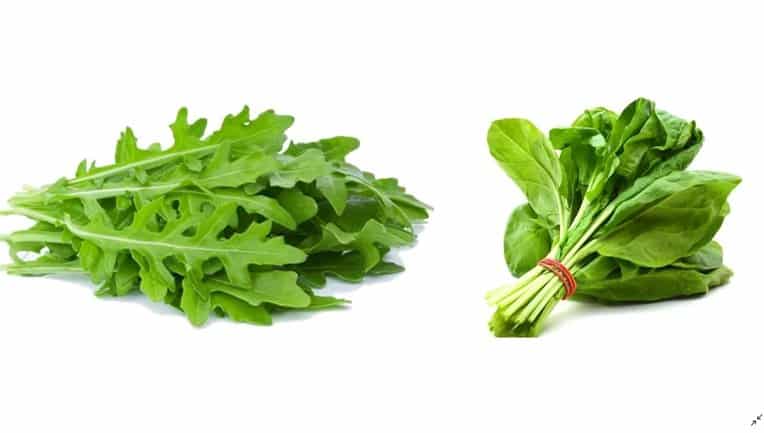
Both spinach and arugula are flowering dark leafy greens eaten raw as salads (alone or with other foods) or cooked, pureed, or blended in shakes. They are sold as fresh, dried, or frozen.
You can eat spinach stems and leaves. However, as it matures and flowers, the leaves become bitter and inedible. On the other hand, you can eat arugula’s leaves, stems, seeds, and even flowers.
Both arugula and spinach are annuals. However, spinach is rarely a biennial, i.e., it can take two years to complete its life cycle.
Finally, spinach grows best in fall, but you can also grow in late fall/early summer, while arugula best grows in spring or fall. However, you can grow these vegetables indoors in containers throughout the year.
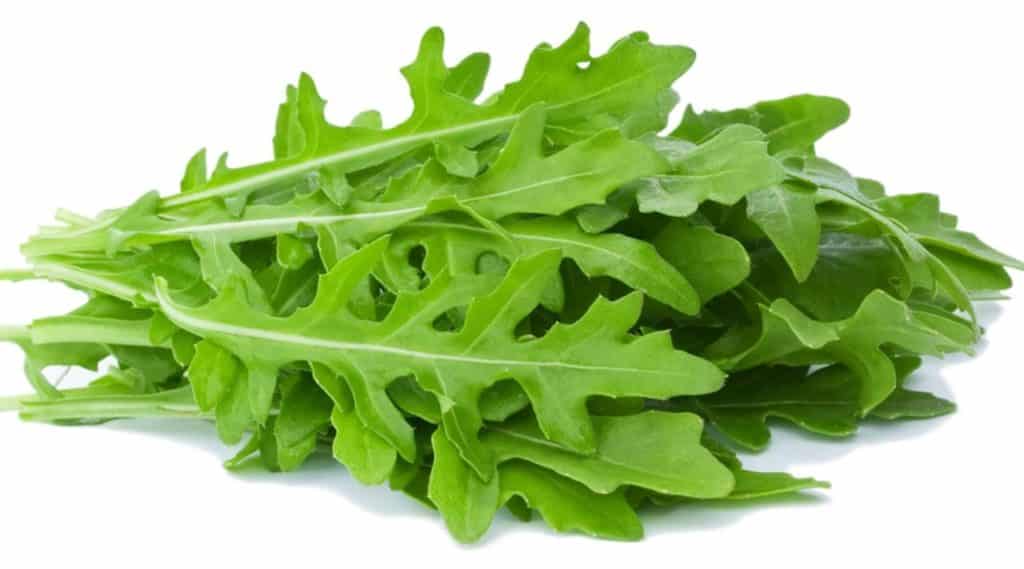
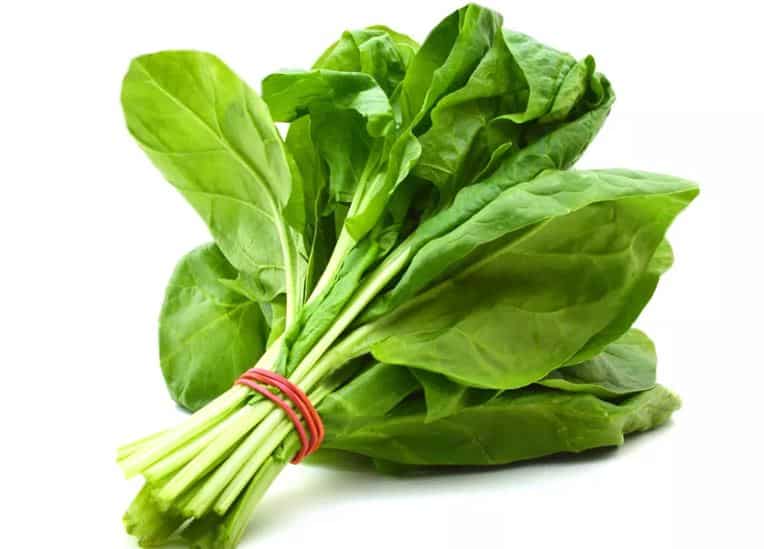
Appearance
How do you distinguish spinach from arugula? Let us look at the appearance of each of these two leafy greens.
| Feature | Arugula | Spinach |
| Sizes | 8 to 40 inches | Up to 12 inches |
| Stem | Thin single stem | Thick fibrous green stem (thickens as they mature) |
| Stem | It has simple, alternating oval to rectangular green to bright green flat or crinkled leaves. The leaf size varies, i.e., 1 to 12 inches long and 0.4 to 5.9 inches wide. Typically, the leaves are more prominent towards the base. | It has smaller (2-3 inches), deeply lobed (elongated with ridges) pinnate leaves with one large terminal lobe and 4 to 10 smaller lateral lobes. |
| Flowers | Slightly larger (0.75 to 1.5 inch) flowers arranged in a corymb. The flowers have creamy white petals, purple veins, yellow stamen. | Small, less conspicuous yellow-green flowers that are about 0.1 to 0.4 inches |
| Fruit | 0.5 to a 1-inch pod with an elongated apical beak. | 0.2–0.4 inches fruit clusters that are hard, lumpy, and dry. |
Taste
Spinach has a very light, slightly sweet taste but becomes tasteless or bitter as soon as it begins flowering.
On the other hand, arugula’s taste for flavor is fresh, tart, bitter, and peppery and tends to be stronger as the plant matures. Arugula flowers and seeds have a spicy and peppery flower, with the seeds somewhat resembling the mustard flavor.
Arugula vs. spinach nutrition
Perhaps a critical consideration when you want to incorporate any food into your diet is looking at nutritional value and benefits.
Here is their nutritional composition of raw spinach and arugula per 100g (3.5 oz). Data source United States Department of Agriculture USDA,
| Arugula | Spinach | |
| Energy | 25 kcal (105kJ) | 23 kcal (97kJ) |
| Proteins | 2.58g | 2.86g |
| Fats | 0.66g | 0.39g |
| Carbohydrate | 3.65g | 3.63g |
| Dietary sugar | 2.05g | 0.42g |
| Dietary fiber | 1.6g | 0.42g |
| Equivalent vitamin A | 119μg | 469μg |
| Beta-carotene | 1420μg | 5630μg |
| Lutein zeaxanthin | 3560 μg | 12200μg |
| Vitamin B1 (Thiamin) | 0.044mg | 0.078mg |
| Vitamin B2 (Riboflavin) | 0.086mg | 0.189mg |
| vitaminB3 (Niacin) | 0.305mg | 0.724mg |
| Vitamin B5 (Pantothenic acid) | 0.437mg | 0.065mg |
| Vitamin B6 | 0.073mg | 0.195mg |
| Folate (Vitamin B9) | 97 μg | 194mg |
| Vitamin B12 | 0 | 0 |
| Vitamin C | 15mg | 28.1mg |
| Vitamin D | 0 | 0 |
| Vitamin E | 0.43mg | 2.03mg |
| Vitamin K | 109 μg | 483 μg |
| Calcium | 160mg | 99mg |
| Iron | 1.46mg | 2.71mg |
| Magnesium | 47mg | 79mg |
| Phosphorus | 52 mg | 49mg |
| Potassium | 360 mg | 558mg |
| Sodium | 27 mg | 79mg |
| Zinc | 0.47mg | 0.53mg |
| Cupper | 0.076mg | 0.13mg |
| Manganese | 0.32mg | 0.897mg |
| Selenium | 0.3 µg | 1µg |
| Water | 91.7g | 91.4g |
| Oxalates | 24.1 ± 3.7 mg (1) | 913 milligrams (2) |
Rich and good sources
If you consider daily percentage value (DV) and categorize a rich source as one with over 20% while a good source has 10-19%, we can conclude that:
- Spinach is a rich source of vitamin A including (beta-carotene and lutein zeaxanthin), folate, vitamin C and K, iron, magnesium, and manganese. It is a good source of calcium, riboflavin, vitamin B6, potassium, vitamin E.
- On the other hand, arugula is rich in vitamin K and folate and a good source of vitamin A and C, calcium, iron, magnesium, and manganese.
Which is better? Spinach or arugula?
Considering the above nutritional value of arugula vs. spinach, it is worthwhile noting that they both have comparable amounts of water, carbohydrates, protein, calories, with arugula having a slightly dietary fiber level.
Furthermore, a side-by-side comparison reveals that spinach is higher in vitamin A, C, and K, magnesium, manganese, and iron. Also, it is higher in all other minerals except phosphorus, calcium, and pantothenic acid.
On the other hand, arugula is higher in calcium and is lower in oxalates compared to spinach.
We hope this closes the iron in arugula vs. spinach issue since clearly, spinach has more, i.e., 2.71mg, while arugula has only 1.46mg. Similarly, an analysis of potassium in arugula vs. spinach shows that spinach has more potassium than 558mg compared to arugula’s 360mg
Therefore, besides having higher oxalates and amount of calcium, spinach is nutritionally better than arugula.
Why is oxalate bad?
Oxalates will increase the risk of kidney stones, lower mineral absorption, interact with some antibiotics. Therefore, if you eat spinach, don’t mix it with other foods also higher in oxalates, such as soy products, beets, raspberry, dates, navy beans, etcetera.
Health benefits of arugula vs. spinach
Both spinach and arugula are nutritious, and they will help boost hydration. Additional health benefits are as follows:
Arugula
According to US News, some of the benefits of arugula include the following.
- Reduces cancer risk
- Help in preventing osteoporosis
- Lowers diabetes risks
- Good for heart
- Protects your heart
- Boosts metabolism and mass muscle since it is high in sirtuins
Spinach
Spinach also has several health benefits, key among, according to WebMD, are
- Good for the eye (rich in zeaxanthin and lutein)
- Reduces oxidative stress
- It May help fight some cancer
- Moderates blood pressure – has nitrates
- Supports brain health or cognitive function
- Helps in osteoporosis prevention
- Reduce anemia risks
- Boost immunity
- Support cardiovascular health
Risks
Since both arugula and spinach are high in vitamin K, they may alter anti-coagulating medicines like warfarin from functioning correctly.
Secondly, overeating these vegetables or any other may cause gas, bloating, and at times cramps.
Finally, spinach is high in oxalates, whose dangers we have already seen.
References
- https://fdc.nal.usda.gov/index.html

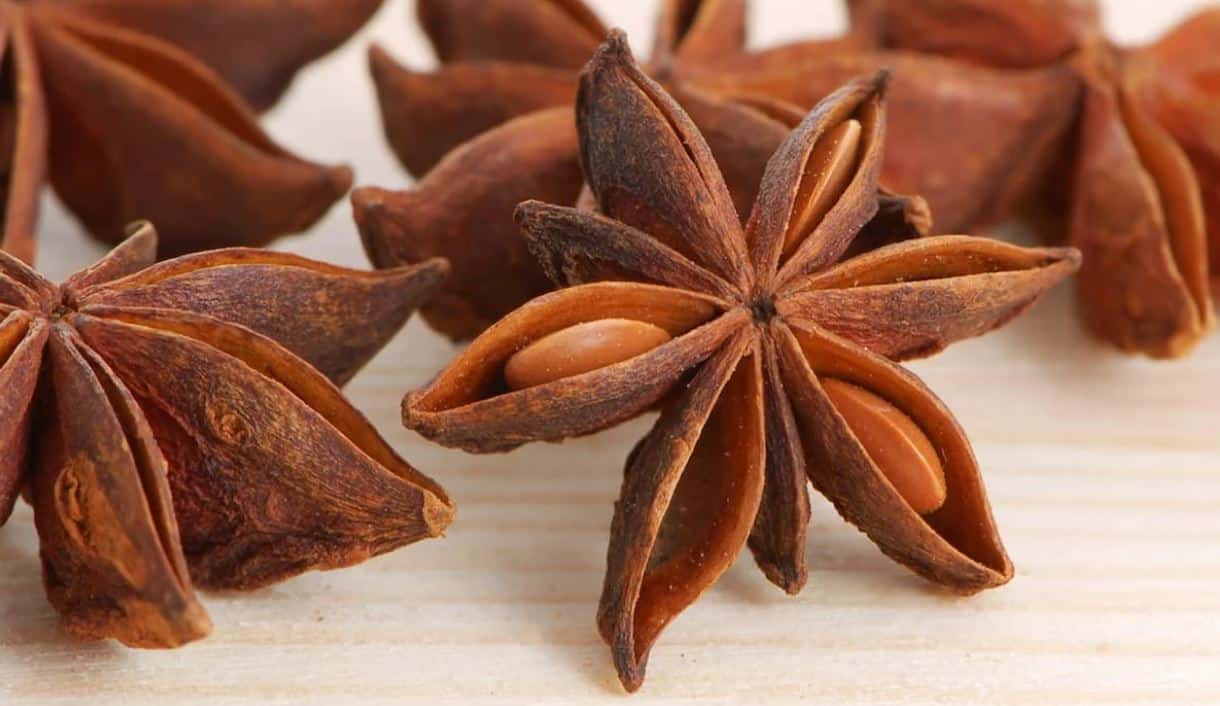
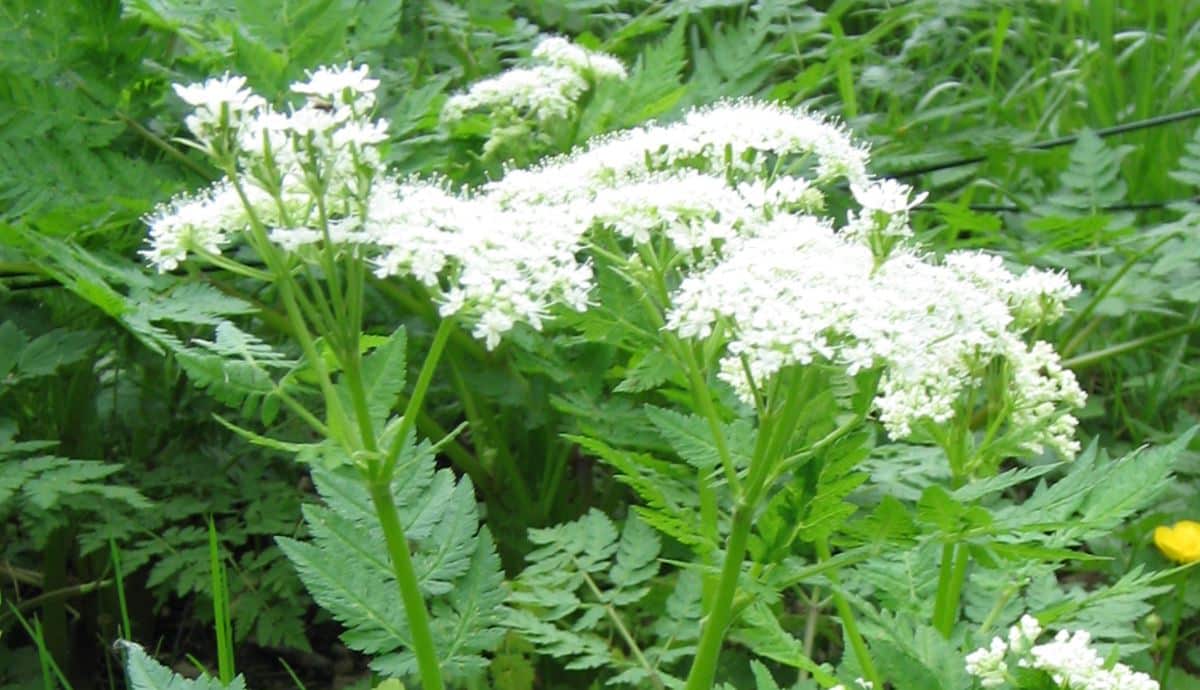
Leave a Reply